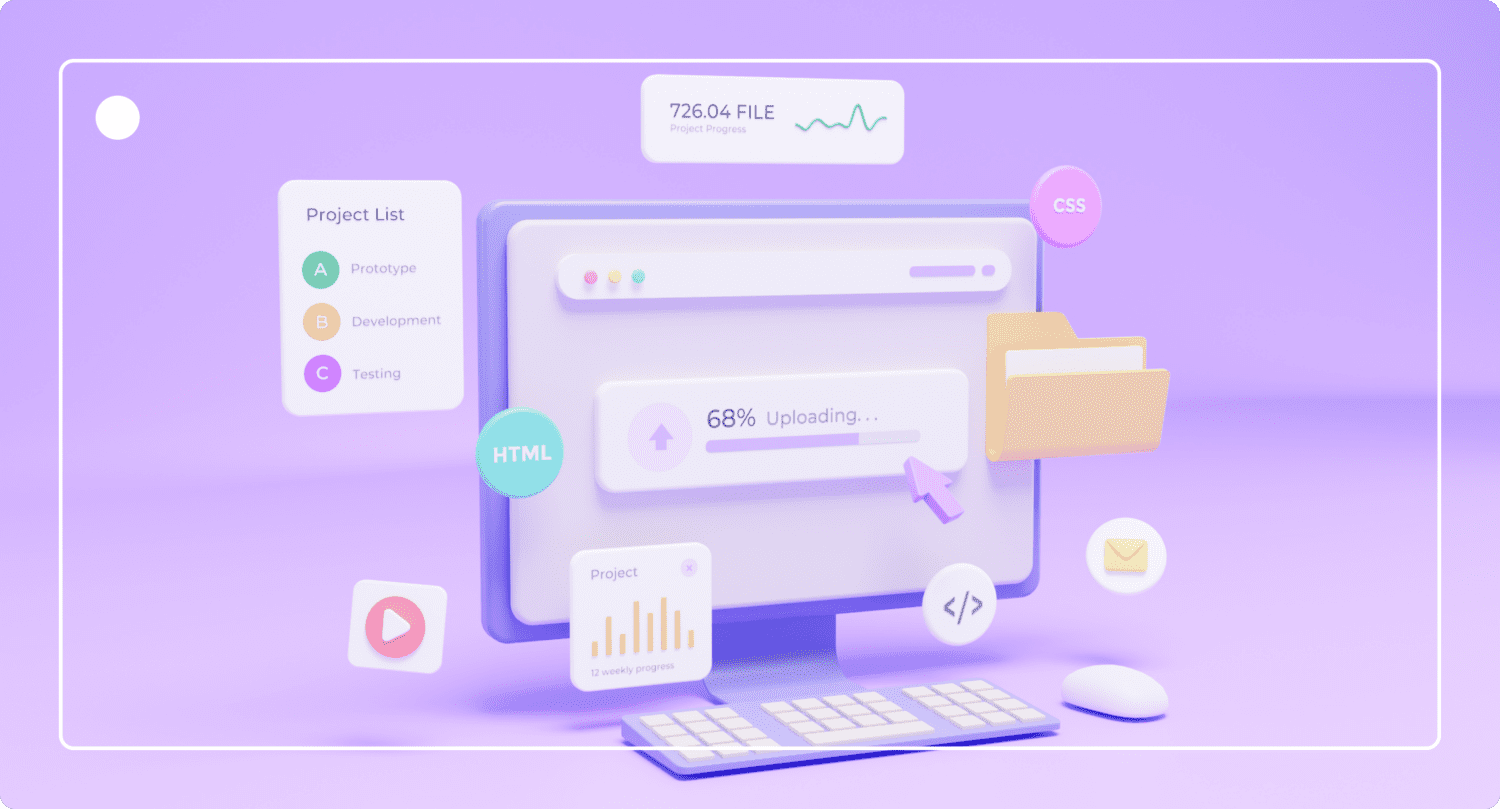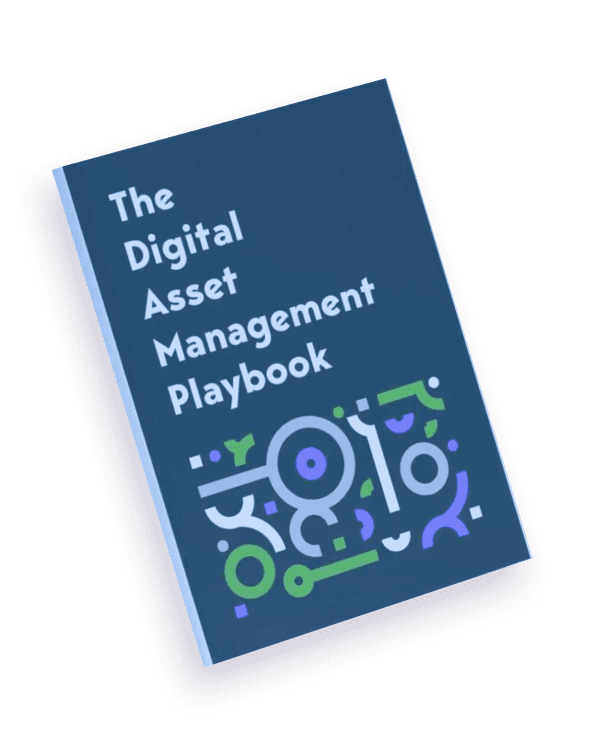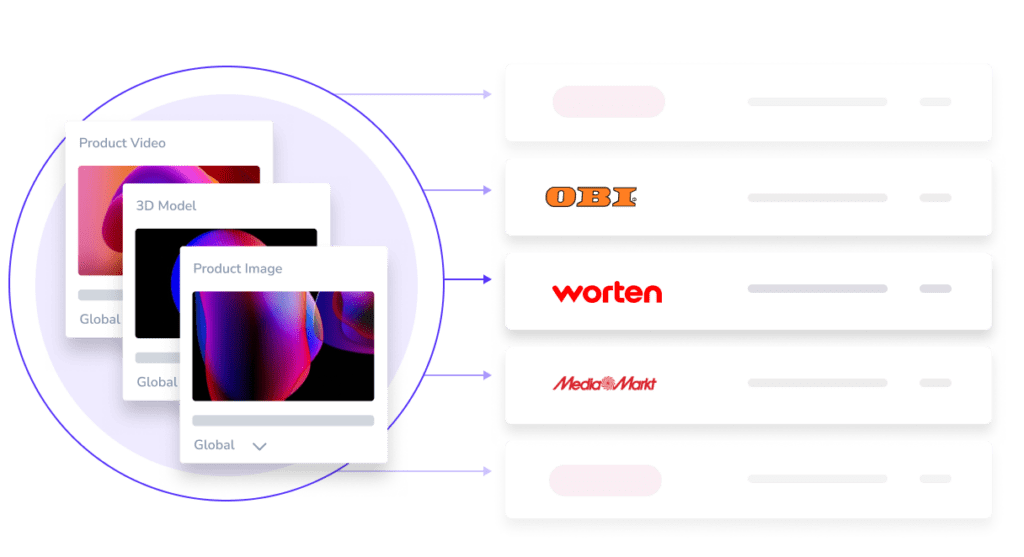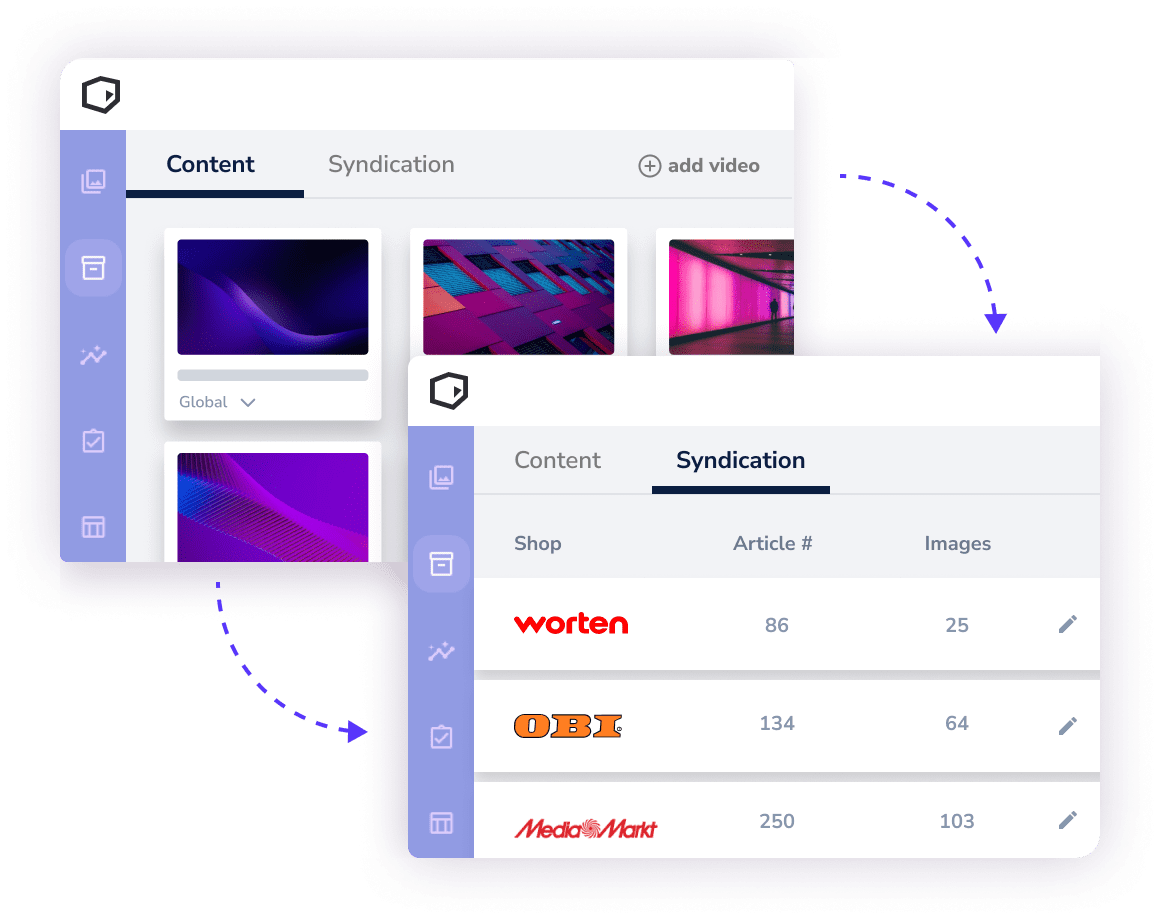Digital Asset Management for E-Commerce: The Ultimate Guide
Digital Asset Management
Updated on February 14, 2025
E-commerce continues to transform the way businesses connect with consumers, but for large brand manufacturers and enterprise-level retailers, success in this space hinges on more than just competitive pricing and product availability.
Efficient digital asset management for e-commerce has emerged as a cornerstone of scalable e-commerce operations.
Managing millions of product images, videos, and associated metadata requires a strategy that not only organises these assets but optimises their use across channels.
This guide explores how e-commerce digital asset management (DAM) can streamline operations, enhance collaboration, and drive better outcomes for your business.
What Is E-Commerce Digital Asset Management?
E-commerce digital asset management refers to specialised platforms and systems designed to store, organise, manage, and distribute digital content such as product photos, videos, descriptions, and marketing materials. These solutions cater to the unique demands of e-commerce businesses, enabling them to maintain brand consistency while accelerating time-to-market for products.
Unlike traditional DAM software, e-commerce digital asset management focuses on supporting product content workflows, ensuring digital assets are optimised for use across multiple sales and marketing channels.
Key Functions of E-Commerce Digital Asset Management Systems
- Approval Workflows: Simplifies asset creation, review, and publishing processes, ensuring consistency and speed.
- Centralised Asset Repository: Provides a secure, searchable hub for storing digital assets including high-quality images, videos, and marketing collateral.
- Automated Metadata Management: Enhances searchability by tagging digital assets with key descriptors like SKU numbers, product categories, and use cases.
- Dynamic Asset Distribution: Automatically formats and syndicates assets for specific platforms, from online marketplaces to social media channels.
- Version Control: Prevents errors by ensuring teams and external partners access the most up-to-date digital files.

Looking for an E-Commerce DAM Provider? Download Our Free Playbook!
Free Download NowExamples of Digital Assets Used in E-Commerce
Digital assets are the backbone of any e-commerce business, serving as the key components that enable product promotion, customer engagement, and seamless operations.
It’s important to note, that in e-commerce, the words digital assets, media assets, and digital content tend to be used interchangeably.
Here are some of the most common examples of digital and media assets used in e-commerce:
1. Product Images
High-quality product photos are critical for showcasing items in online stores. These include multiple angles, lifestyle images, and zoomable, detailed shots to give customers a clear understanding of the product.
2. Product Videos
Videos offer dynamic storytelling and demonstrate how a product works. For example, a clothing brand might use product videos to show how the fabric flows, while a technology company might showcase unboxing videos or tutorial clips.
3. Marketing Collateral
Digital assets like banners, infographics, and promotional graphics are essential for advertising campaigns. These materials are used across email newsletters, social media platforms, and paid ad campaigns to attract and convert customers.
4. User-Generated Content (UGC)
Photos, videos, and reviews provided by customers are increasingly popular media assets in e-commerce. Featuring review videos on product pages and social media boosts authenticity and customer trust.
Written product reviews are another common type of UGC used in e-commerce and finding a way to collect and store them is key for leveraging them effectively.
5. Logos and Brand Guidelines
Consistent branding is critical for creating a professional appearance across multiple platforms. Digital assets include logos, colour palettes, and typography files that adhere to brand guidelines.
6. 3D Models and Augmented Reality (AR) Assets
As AR becomes more prevalent, more businesses are investing in 3D e-commerce and the digital content it requires. This includes creating 3D models that can be used for augmented reality. These assets allow customers to virtually place items in their immediate environment.
7. Product Descriptions and Metadata
Text-based assets like detailed product descriptions, technical specifications, and metadata (e.g., keywords and tags) ensure that products are searchable and appealing to online customers. These assets also improve SEO and product discoverability.
8. E-Commerce Templates
Templates for web pages, product listings, and email campaigns streamline workflows and ensure consistent visual and functional design across the online store.
9. Training and Support Materials
For more complex products, downloadable guides, manuals, and FAQs serve as essential digital assets that improve the customer experience post-purchase.
10. Social Media Content
E-commerce businesses rely on curated digital content for platforms like Instagram, TikTok, and Pinterest. This includes reels, stories, and posts optimised for different formats and audience engagement strategies.
By managing and optimising your digital assets, you can provide a consistent, engaging, and effective customer experience across all touchpoints.
Why E-Commerce Businesses Need DAM
Managing all your digital assets without a structured system can quickly become overwhelming, especially as the volume of files and resources grows. For e-commerce businesses, this challenge is even more pronounced due to the high demand for consistent, high-quality visuals and content across multiple platforms.
In this section, we’ll explore the specific ways a digital asset management solution can transform your e-commerce operations, making it easier to organise, access, and utilise your assets effectively.
1. Scaling with Product Volume
Retailers selling thousands or even millions of SKUs face immense challenges in managing and updating their product assets. Without digital asset management software, teams often waste valuable time locating, editing, and sharing files. DAM tools provide structure and accessibility, enabling teams to scale without sacrificing quality.
2. Improving Collaboration Across Teams
Modern digital asset management systems facilitate seamless collaboration among internal teams and external stakeholders, such as agencies and distributors. Common features found in digital asset management platforms like role-based permissions and shared workspaces ensure the right people have access to the right digital files at the right time.
3. Accelerating Time-to-Market
Automating workflows such as resizing images, tagging assets, and approving content can dramatically reduce the time required to prepare product listings. Retailers can launch campaigns and new product lines faster, gaining a critical edge in competitive markets.
4. Enhancing Brand Consistency
For e-commerce brands, maintaining a unified visual identity is crucial. Digital asset management tools enforce brand guidelines by centralising assets and restricting access to outdated or unapproved files.

Boost E-Commerce Efficiency with DAM
See how DemoUp Cliplister connects brands and online shops through digital asset management for e-commerce.
Understanding the ROI of Digital Asset Management Software
Implementing a digital asset management solution is an investment, but the returns can be substantial. Here’s how businesses can quantify the benefits:
Time Savings
Digital asset management software significantly reduces the time spent searching for, modifying, and approving digital assets. Teams no longer need to sift through disorganised folders or email chains to locate the right file. By automating these tasks, organisations can save thousands of hours annually, allowing employees to focus on more strategic activities.
Cost Efficiency
By streamlining workflows and minimising duplication, effective digital asset management helps businesses cut costs. For example, instead of recreating assets due to loss or versioning errors, companies can quickly access the approved, updated versions they need. This efficiency reduces production expenses and accelerates time-to-market.
Improved Asset Usage
A DAM solution ensures that existing assets are used to their full potential. By categorising and tagging assets properly, teams can easily find and reuse content in a central repository for use in different campaigns, saving money that would otherwise be spent on new content creation.
Enhanced Revenue
With faster access to high-quality assets and quicker campaign launches, businesses can improve their marketing agility. This often results in better customer engagement and higher conversion rates, directly contributing to revenue growth.
Risk Mitigation
Outdated or inconsistent brand messaging can lead to reputational damage or lost sales opportunities. DAM systems ensure that only approved, brand-compliant assets are used across all channels, reducing the risks associated with non-compliant or incorrect content.
Data-Driven Insights
Modern DAM platforms provide analytics on asset performance, helping businesses understand which assets drive engagement and which do not. This data enables teams to make informed decisions about content creation and optimisation, leading to better ROI on marketing efforts.
Integration Benefits
When integrated with other tools like software for product information management (PIM), content management systems (CMS), or e-commerce platforms, a DAM solution creates a seamless workflow for managing all your digital files. This eliminates redundancies, reduces errors, and ensures consistency across all customer touchpoints.
Scaling with Growth
As businesses grow, so do their digital asset needs. DAM software is typically built to scale, ensuring that organisations can handle increasing volumes of content without compromising efficiency or quality. This scalability ensures long-term cost-effectiveness.
Understanding these DAM benefits helps businesses justify their investment in a new system while aligning its use with broader strategic objectives.

Boost E-Commerce Efficiency with DAM
See how DemoUp Cliplister connects brands and online shops through digital asset management for e-commerce.
Lesser-Known Benefits of E-Commerce DAM Software
While the primary features, benefits, and reasons for implementing DAM software may be obvious, there are several points unique to ecommerce businesses. Here are some lesser known benefits of digital asset management systems for e-commerce companies.
Distributing Digital Assets
In e-commerce, getting content to the point of sale is the most important driver of success. Your customers want to understand your products, have the information when they’re buying, and have it in a format that’s easily digestable.
Ironically, that’s where many e-commerce digital asset management systems fall short. Look for a DAM that can syndicate your media files like product videos and 3D models to your biggest retailers – and you will never miss another product launch again.
While most companies have ways to share digital assets, few have the ability to fully cover the digital asset management lifecycle all the way to publication – which, arguably, is the entire reason e-commerce marketing teams create content in the first place.

Tip: The DemoUp Cliplister DAM software is ideal for e-commerce brands and shops who want to exchange content in real-time. Eliminate the hassle of manual content updates with our unique product content syndication network – and achieve complete brand consistency with just a few clicks.
Mitigating the Risks of Outdated Assets
Using outdated or inconsistent product images can erode trust with customers. DAM systems ensure all digital files—from promotional videos to product photos—are current, relevant, and aligned with the latest branding.
Supporting International Growth
As retailers expand into new markets, DAM platforms can streamline the localisation process. Metadata tagging, language-specific asset versions, and regional distribution workflows allow for quick adaptation to local market needs.
Measuring Asset Performance
Sophisticated DAM systems integrate analytics that provide insights into how assets perform across various channels. Retailers can track asset performance metrics for individual assets, such as click-through rates on images or conversion rates for product videos, to optimise future campaigns.
Streamlining Content Approvals
For many e-commerce businesses, the approval process for assets is a bottleneck. DAM systems simplify this by enabling role-based approvals, notifications, and automated workflows. This ensures high-quality assets are published on time without unnecessary delays.
Optimising Cross-Channel Campaigns
Retailers frequently run multi-channel campaigns. DAM platforms ensure that marketing materials are properly formatted and delivered to each channel, whether it’s an e-commerce marketplace, social media platform, or email newsletter. This reduces manual rework and ensures consistency.
Cost Reduction through Asset Reuse
DAM systems facilitate the reuse of existing assets by making them easier to locate and repurpose. This is especially valuable for seasonal promotions and product launches where pre-approved visuals can save time and resources.
How to Select the Right DAM Solution for E-Commerce
With numerous DAM solutions available, selecting the right DAM for your business requires a thorough evaluation. Here are the key considerations:
- Scalability: Ensure the platform can handle increasing volumes of assets as your product catalogue grows.
- Customisable Workflows: Look for systems that can adapt to your team’s processes, such as asset approvals or content localisation.
- Integration Capabilities: Choose a DAM that seamlessly integrates with tools you already use, like Shopify, Magento, or Adobe Creative Cloud.
- User Experience: A simple, intuitive interface encourages adoption and maximises productivity across teams.
- Data Security: Opt for platforms with robust permission controls, encryption, and compliance with regulations like GDPR.
- Analytics and Reporting: Look for a solution that provides insights into asset performance and usage patterns.
- Cloud Storage Options: Select a DAM with cloud-based storage to provide scalability and accessibility for remote teams.
- Flexible Licensing: Ensure the licensing model aligns with your business requirements, especially if you expect growth or fluctuating needs.

Looking for an E-Commerce DAM Provider? Download Our Free Playbook!
Free Download NowBest Practices for E-Commerce DAM Implementation
Digital asset management is far more than a way to store media files in the cloud – it’s a way to improve your entire business operations. Here are some best practices for implementing a new DAM software solution.
Organise Assets with Metadata
Metadata is the backbone of managing digital content. Ensure all digital assets are tagged with relevant information, including SKU numbers, categories, and keywords. This makes it easier to search for files and facilitates automated workflows.
Align DAM with Marketing Goals
Collaborate with your marketing team to ensure the DAM system supports their marketing campaigns. Features like automated distribution to marketing channels, image editing software, and content creation tools can directly enhance campaign efficiency.
Conduct Regular Audits
Periodically review your digital asset management solution to identify outdated or underperforming assets. Replace or archive these files to keep your repository lean and relevant.
Train Your Team
Invest in training sessions to ensure all stakeholders – including both internal and external stakeholders -understand how to use the DAM system to manage digital assets effectively. Highlight features that address their specific needs, such as role-based access or version control.
Build a Governance Policy
Define clear rules for usage, digital asset storage, and access. A governance policy ensures that assets are used consistently and securely across teams and channels.
Future Trends in E-Commerce Digital Asset Management
As technology continues to evolve, so does online shopping. Here are some trends that you can look forward to in the coming years.
Content Delivery Networks as Part of E-Commerce DAM Software
The use of e-commerce digital asset management software brings serious advantages, especially for brands and retailers. Various integrated functions enable uncomplicated and simplified delivery of content to various channels, optimised for end users.
These include, above all, dynamic content delivery networks (CDN for short).
Through globally distributed servers, larger media files can be delivered without any problems. In addition, both costs and the loading time of websites can be significantly reduced.
This process ensures digital assets are dynamically delivered in the appropriate format for any end-user device. Edited content is always stored in the latest version and adapted on all channels.
Product and brand videos can be integrated into the product gallery without any hassle thanks to this function, which ensures increased conversion rates.
The integration of an e-commerce digital asset management system into your workflows offers you several advantages, including time and cost savings, and contributes to a positive customer experience.
AI-Powered Asset Management
Artificial intelligence is transforming digital asset management by enabling advanced capabilities such as automated metadata tagging, predictive analytics, and content recommendations. AI can also enhance personalisation efforts, ensuring customers see the most relevant images and videos.
Expanded Integration with AR/VR
As augmented and virtual reality become more prevalent in e-commerce, digital asset management will evolve to manage 3D models and immersive content. This ensures retailers can deliver cutting-edge experiences to customers.
Enhanced Collaboration DAM Systems
Future DAM systems are likely to feature improved collaboration tools, such as real-time editing and enhanced content syndication capabilities, making it easier for teams to work together on asset creation and updates.

DAM-Driven Insights for Product Development
DAM systems may begin integrating with product lifecycle management tools, offering insights into customer engagement with digital assets. This data can inform product development, allowing brands to refine offerings based on customer preferences.
Content Automation
Future DAM systems may act as content automation platforms, enabling businesses to dynamically generate and customise product descriptions, marketing copy, and other textual assets alongside visual content.
Conclusion
Digital asset management is no longer a “nice-to-have” for e-commerce businesses; it is a necessity for scaling efficiently and maintaining brand consistency – which translates to a competitive edge.
From centralising your digital asset library to streamlining collaboration and optimising content performance, DAM platforms provide the tools you need to succeed in today’s fast-paced retail environment.
With the right tools, processes, and strategic focus, your e-commerce operations can achieve unparalleled efficiency and deliver exceptional value to customers worldwide.
For more digital asset management tips, tricks, and strategies, check out our blog. Or return to the homepage to see our full product portfolio.

Boost E-Commerce Efficiency with DAM
See how DemoUp Cliplister connects brands and online shops through digital asset management for e-commerce.
Frequently Asked Questions
Digital asset management in e-commerce involves organising, storing, and retrieving digital files efficiently. It streamlines the management of product images, videos, and other content, ensuring a seamless and organised workflow for online businesses.
Digital asset management in e-commerce enhances efficiency by centralising and organising multimedia content. It accelerates content retrieval, ensures brand consistency, and facilitates collaborative workflows, leading to improved customer experiences and operational effectiveness.
Select an e-commerce digital asset management solution based on scalability, user-friendliness, metadata capabilities, version control, and integration with other tools. Ensure it aligns with your business needs, supporting seamless content creation, management, and distribution.
Manage digital assets in e-commerce by organising files logically, implementing metadata tagging, version control, and ensuring a user-friendly interface. Utilise digital asset management systems to streamline workflows, making it easy to access, share, and update multimedia content effectively.
Consider implementing an e-commerce digital asset management system if you face challenges in organising, accessing, or sharing digital content. Signs include content disorganisation, slow retrieval times, and difficulties maintaining brand consistency. An effective system enhances workflow efficiency and content management.
Better Content. More Sales.

Fill out the form to discover our end-to-end eCommerce content solutions for brands & shops




